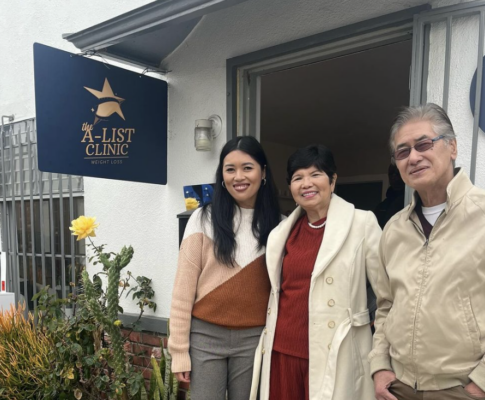This week I wanted to consider some cultural clashes happen when I balance different parts of my identity. Though I’m a Valley Girl through and through, I’m also a proud Filipino-American whose parents immigrated to America for a better life. Fortunately, there’s a sizable community of Filipino friends and family in SoCal. While we’re a minority, we are definitely not alone. Unfortunately, the culture and traditions can bump up against my weight loss interests and wellness advocacy.
Among all Asian-American subgroups, Filipino-Americans have the highest rates of hypertension, raising risks of heart attack and stroke. Granted, everyone is their own individual, but perspectives on weight management and weight loss journeys can be shaped by cultural traditions, societal influences, and family experiences. It’s time we seriously investigate them.
Cultural Factors:
- Food as Identity and Connection: Filipino cuisine is a rich tapestry of flavors and ingredients, reflecting centuries of influences and regional diversity. From savory adobo to sweet halo-halo or ube, food plays a central role in Filipino culture. It serves as a source of identity and connection for Filipino-Americans. In her book “The Filipino American Kitchen,” author Jennifer Aranas highlights the significance of food in Filipino-American households, emphasizing its role in fostering familial bonds and preserving cultural heritage.
- Celebratory Feasting and Social Norms: Filipino celebrations, whether weddings, birthdays, religious festivals, or just a family reunion are often marked by tables and tables of food. These occasions serve as opportunities for family and friends to come together, share gossip or jokes, and indulge in traditional (or fusion!) dishes. However, the abundance of food and social pressure to partake can pose challenges for people striving to manage their weight. Aunties want you full and then to eat even more. Meanwhile people eating one meal will start preparing the next.
Views on Body Image:
- Cultural Ideals of Beauty: Like many cultures, Filipino ideals of beauty are influenced by societal norms and historical perspectives. In his research on body image, Dr. Kevin Nadal, a Filipino-American psychologist, highlights the cultural preference for “mestizo” or fair-skinned individuals in Filipino media and advertising. This idealization of Western beauty standards can contribute to body dissatisfaction and self-esteem issues among Filipino-Americans, regardless of weight. However, it also plays into common, unrealistic standards on weight, too.
- Navigating Conflicting Messages: Filipino-Americans may grapple with conflicting messages about body image and weight management. While traditional Filipino culture celebrates fuller figures as a sign of health and prosperity, Western media often promotes thinness as the epitome of beauty. These contrasts can create internalized pressure and feelings of inadequacy for people trying to reconcile cultural expectations with personal well-being. Remember, it’s not just diet and exercise. Our bodies are shaped by hormones, metabolism, genes, sex, and age. If you’re 45, you can’t diet-yourself back to being 22.
Challenges and Barriers to Weight Management:
- Access to Healthy Foods: In underserved Filipino-American communities, access to fresh, nutritious foods may be limited, contributing to higher rates of obesity and diet-related health conditions. Filipino-Americans can face disparities in access to healthy foods and resources, exacerbating challenges in weight management and chronic disease prevention. Many people simply cannot travel long distances for a suitable grocery store or Farmers Market.
- Cultural Influences on Dietary Habits: Rich sauces, fried dishes, and carbohydrate-heavy staples like rice and noodles characterize traditional Filipino cuisine. While these foods are beloved staples, they can also contribute to weight gain and metabolic health issues when consumed in excess. Fortunately, there are ways to modify traditional recipes to align with modern dietary guidelines, promoting healthier eating habits within the Filipino-American community.
Community Solutions and Support:
- Culturally Tailored Health Programs: Recognizing the unique needs of Filipino-Americans, organizations like the Filipino Food Movement and The Philippine Nurses Association of America have launched initiatives to promote health and wellness within the community. These programs offer culturally sensitive resources, workshops, and educational materials aimed at empowering individuals to make informed choices about nutrition and physical activity.
- Community Engagement and Advocacy: Filipino-American community leaders and healthcare professionals (such as yours truly) play a crucial role in advocating for policies and programs that address disparities in access to healthy foods and healthcare services. By fostering partnerships with local organizations and policymakers, we can amplify the voices of Filipino-Americans and advocate for systemic changes that support health equity and well-being.
Cultural, societal, and environmental factors all contribute to a person’s health, including their weight. Filipinos are no different. By acknowledging these complexities and fostering culturally sensitive approaches to better diets, expectations, and wellness, we can work towards creating supportive environments that empower Filipino-Americans to lead healthier, more fulfilling lives.
